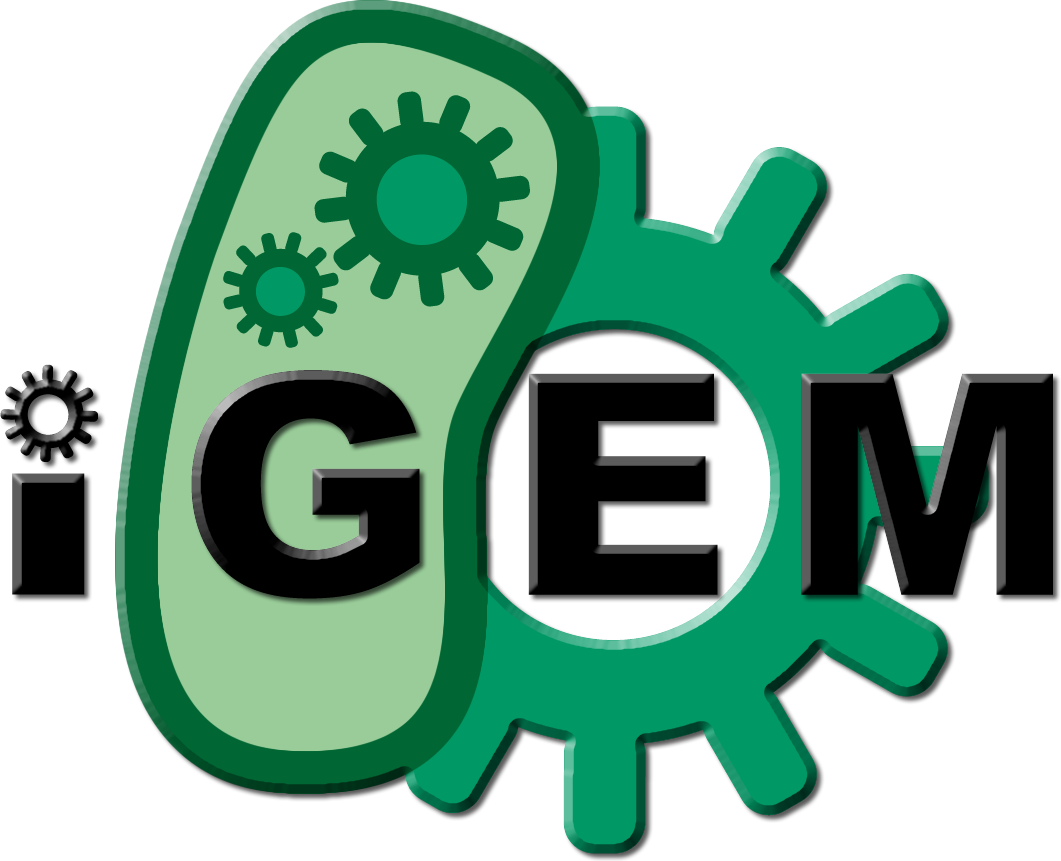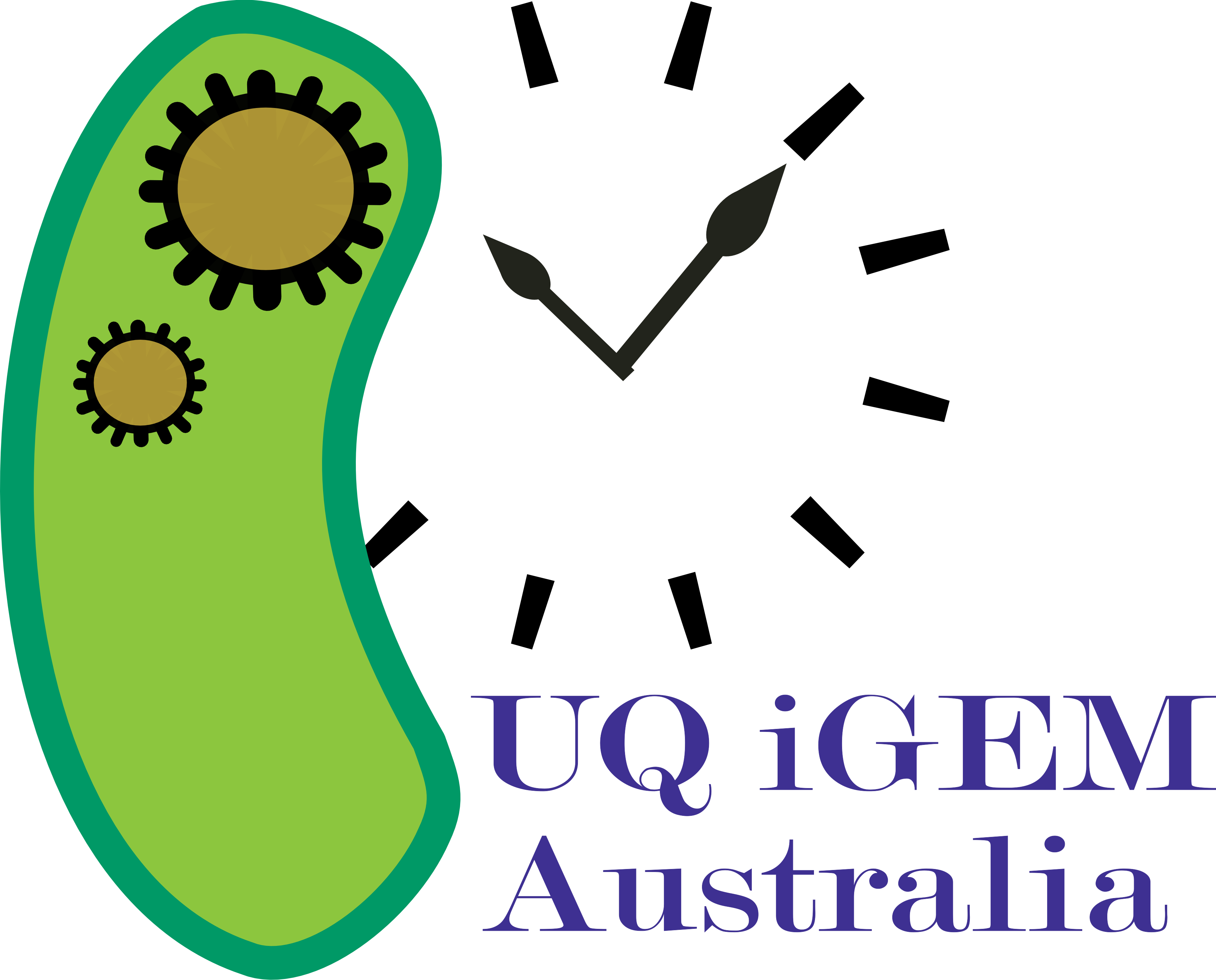Team:UQ-Australia/Modeling
From 2011.igem.org
| Line 23: | Line 23: | ||
{|style="width:100%;" border="0" cellpadding="10" cellspacing="0" | {|style="width:100%;" border="0" cellpadding="10" cellspacing="0" | ||
|width="125" |[[File:Synchronisation viewpdf UQ.png|125x125px|link=https://static.igem.org/mediawiki/2011/d/d6/PHYS3900-LitReview-Ann-PrettiedUp.pdf]] | |width="125" |[[File:Synchronisation viewpdf UQ.png|125x125px|link=https://static.igem.org/mediawiki/2011/d/d6/PHYS3900-LitReview-Ann-PrettiedUp.pdf]] | ||
| - | | Many expressions in language rely on the idea of time. Here, we shall take a journey through time, from the idea of clock synchronisation, first shown about 400 years ago by Christiaan Huygens, to the recent observations of this synchronisation phenomenon in nature. Currently, an understanding of this process is currently being carried out at the genetic level. A union of physical modelling with mathematical theory and biological experimentation is leading to a deeper understanding of synchronisation in all disciplines, but particularly in the biological sciences. | + | | Many expressions in language rely on the idea of time. Here, we shall take a journey through time, from the idea of clock synchronisation, first shown about 400 years ago by Christiaan Huygens, to the recent observations of this synchronisation phenomenon in nature. Currently, an understanding of this process is currently being carried out at the genetic level. A union of physical modelling with mathematical theory and biological experimentation is leading to a deeper understanding of synchronisation in all disciplines, but particularly in the biological sciences. [https://static.igem.org/mediawiki/2011/d/d6/PHYS3900-LitReview-Ann-PrettiedUp.pdf '''Here'''] we shall explore the physically interesting, but mathematically...just chaotic, area of clocks. |
| + | |||
| + | [https://static.igem.org/mediawiki/2011/d/d6/PHYS3900-LitReview-Ann-PrettiedUp.pdf '''A timely investigation into the behaviour of clocks'''] | ||
|} | |} | ||
| Line 30: | Line 32: | ||
{|style="width:100%;" border="0" cellpadding="10" cellspacing="0" | {|style="width:100%;" border="0" cellpadding="10" cellspacing="0" | ||
| + | | Many teams have been using microscopy during their experiments. Although these (thankfully!) may not directly be any of the submitted BioBricks, microscopy has become important in experimental biology. [https://static.igem.org/mediawiki/2011/a/a9/JamBen42013532_FormattedPopSciArticle_forUQ-iGEM.pdf '''Here'''] we shall present an enlightening introduction the microscopy, tangible for old and new iGEMers! | ||
| + | |||
| + | [https://static.igem.org/mediawiki/2011/4/4f/Fields_report_for_UQ_iGEM.pdf '''Putting the Lumen in Luminescence'''] | ||
|width="125" |[[File:Microscopy viewpdf UQ.png|125x125px|link=https://static.igem.org/mediawiki/2011/a/a9/JamBen42013532_FormattedPopSciArticle_forUQ-iGEM.pdf]] | |width="125" |[[File:Microscopy viewpdf UQ.png|125x125px|link=https://static.igem.org/mediawiki/2011/a/a9/JamBen42013532_FormattedPopSciArticle_forUQ-iGEM.pdf]] | ||
| - | |||
|} | |} | ||
| Line 37: | Line 41: | ||
{|style="width:100%;" border="0" cellpadding="10" cellspacing="0" | {|style="width:100%;" border="0" cellpadding="10" cellspacing="0" | ||
| - | |||
|width="125" |[[File:Microscopy viewpdf UQ.png|125x125px|link=https://static.igem.org/mediawiki/2011/4/4f/Fields_report_for_UQ_iGEM.pdf]] | |width="125" |[[File:Microscopy viewpdf UQ.png|125x125px|link=https://static.igem.org/mediawiki/2011/4/4f/Fields_report_for_UQ_iGEM.pdf]] | ||
| + | | After [https://static.igem.org/mediawiki/2011/a/a9/JamBen42013532_FormattedPopSciArticle_forUQ-iGEM.pdf that enlightening introduction], [https://static.igem.org/mediawiki/2011/4/4f/Fields_report_for_UQ_iGEM.pdf '''here'''] we shall investigate the behaviour of light within confocal and two-photon microscopy. By taking established theory describing the behaviour of focused light in three dimensions, we show through computer simulation that the resolution achieved in confocal and two-photon microscopy is dependent on the wavelength of light involved. This article would have greater appeal to those not fearful of as few equations. | ||
| + | |||
| + | [https://static.igem.org/mediawiki/2011/4/4f/Fields_report_for_UQ_iGEM.pdf '''Resolving power in microscopy'''] | ||
|} | |} | ||
| - | Although these articles do not directly contribute towards a new BioBrick part (yet), we hope this investigation settles any curiosities regarding focused light in microscopes and perhaps inspires iGEMers to further consider the inner working of the apparatus on which they can depend quite heavily. | + | Although these articles do not directly contribute towards a new BioBrick part (yet!), we hope this investigation settles any curiosities regarding focused light in microscopes and perhaps inspires iGEMers to further consider the inner working of the apparatus on which they can depend quite heavily. |
Revision as of 11:31, 5 October 2011
 "
"








